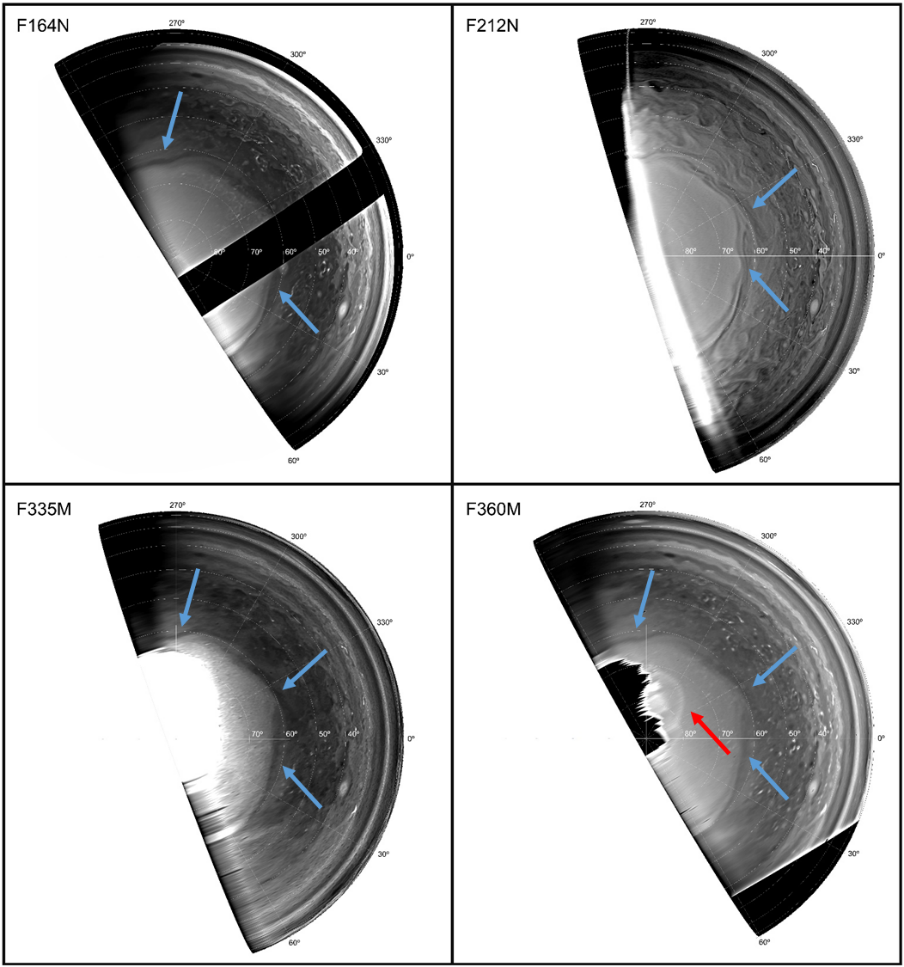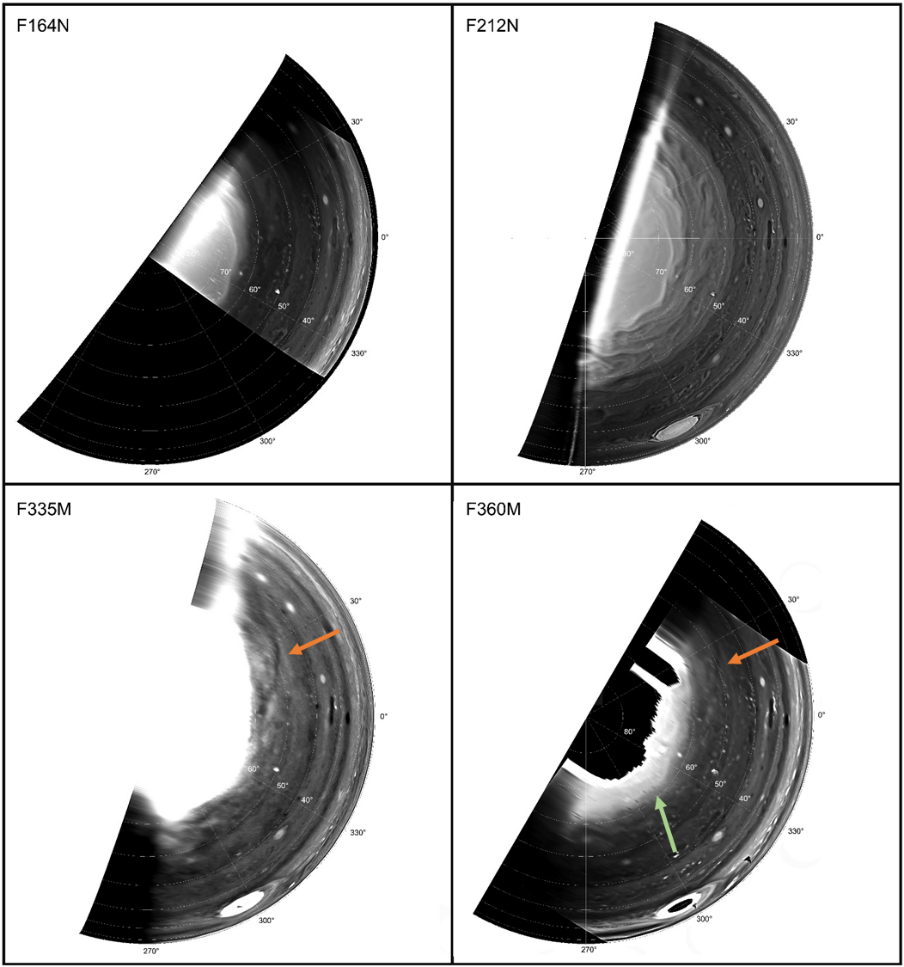- 1UPV/EHU, Escuela Ingernieria de Bilbao, Fisica Aplicada, Spain (arrate.antunano@ehu.eus)
- 2LESIA, Observatoire de Paris, Université PSL, CNRS, Sorbonne Université, Université de Paris, Meudon, France
- 3Department of Astronomy, University of California, Berkeley, CA, USA
- 4Department of Mathematics, Physics and Electrical Engineering, Northumbria University, Newcastle upon Tyne, UK
- 5School of Physics and Astronomy, University of Leicester, UK
- 6Jet Propulsion Laboratory, California Institute of Technology, CA, USA
- 7University of California, Berkeley, USA
The NIRCam instrument on JWST obtained high-resolution images of Jupiter at wavelengths between 1.65 µm and 4.05 µm on July 22, 2022 as part of the Early Release Science program 1373 [1]. At these wavelengths and at Jovian high latitudes, polar hazes located in the stratosphere become the dominant features in the images, with little visibility of details in the troposphere, which appear dark due to strong absorptions caused by methane and hydrogen. Ground-based and HST observations of Jupiter’s Polar Regions usually display smooth features in the hazes whose dynamics are difficult to discern due to low contrast and limited spatial resolution. The new JWST views of Jupiter’s polar and sub-polar areas display intriguing stratospheric features, the most remarkable ones being low-albedo, elongated features located at the sub-polar region (near 50°-60° latitude) in 3.35-µm and 3.6-µm images sensing stratospheric hazes and tropospheric clouds.
With the aim of characterising the nature and origin of the dark filaments observed in the sub-polar stratosphere in the JWST images, we examine various sets of images: (i) images taken by the NIRCam instrument on-board the JWST acquired at wavelengths between 1.65 µm and 4.05 µm on July 22, 2022, sensing from the troposphere to the stratospheric hazes; (ii) data taken by NIRSpec instrument on-board the JWST acquired on December 24, 2022, with the F290LP-G395H filter ranging from 3 µm to 5 µm; (iii) images captured by the WFC3 camera on the Hubble Space Telescope acquired at the methane absorption band (889 nm) and in the ultraviolet (275 nm), sensing the tropopause and upper-troposphere respectively, on July 28, 2022; and (iv) JunoCam images taken on August 18, 2022, in the visible channels sensing the cloud-tops. Polar projections of the NIRCam data are shown in Figure 1 and Figure 2, where some of the above-mentioned elongated features are indicated by coloured arrows.
In this talk, we present highlights from the investigation of the polar and sub-polar dynamics and the polar structures observed in the stratosphere of Jupiter. We report the presence of sub-polar dark elongated features in 3.35 µm and 3.6 µm images sensing stratospheric hazes and tropospheric clouds, and compare these features to other potential elongated structures observed in the JunoCam [2] and HST images. We also share an analysis of the sizes, distribution and types of elongated features observed in all the datasets analysed here and present the dynamics of these features by analysing image pairs separated by 10 hours. Finally, by analysing all the results, we propose different candidates that could explain the nature of these features and discuss their potential origin.

Figure 1: Polar projections of Jupiter’s northern hemisphere from images captured on July 22, 2022, by the NIRcam instrument on-board the JWST. Blue arrows indicate some of the dark elongated features and the red arrow indicates a bright-elongated arc.

Figure 2: Same as Figure 1 but for the southern hemisphere. Orange arrows indicate some of the dark elongated features and the green arrow indicates a bright-elongated feature.
References: [1] Hueso, R., Sánchez-Lavega, A., Fouchet, T. et al. An intense narrow equatorial jet in Jupiter’s lower stratosphere observed by JWST. Nat Astron 7, 1454–1462 (2023). [2] Orton, G.S., Rogers, J. et al. Jupiter’s High-Altitude Hazes as Observed by JunoCam. Geophysical Research Abstracts, Vol. 21, EGU2019-3188 (2019).
How to cite: Antuñano, A., Rodriguez-Ovalle, P., Hueso, R., Fouchet, T., Sánchez-Lavega, A., de Pater, I., Stallard, T. S., Melin, H., Orton, G. S., Wong, M., and Fletcher, L. N.: JWST/NIRCAM views of Jupiter's polar regions, Europlanet Science Congress 2024, Berlin, Germany, 8–13 Sep 2024, EPSC2024-808, https://doi.org/10.5194/epsc2024-808, 2024.